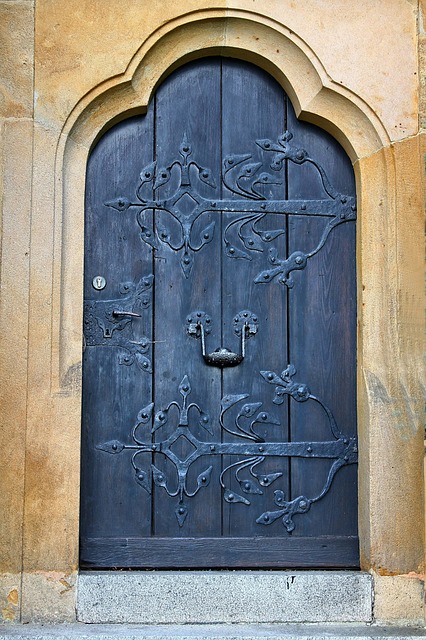Accessible door solutions, including sliding, swinging, and automatic doors, are vital for creating inclusive spaces that cater to individuals with physical disabilities or mobility challenges. Each type offers unique benefits: sliding doors for narrow corridors, swinging doors for traditional access and clearances, and automatic doors for hands-free hygiene and accessibility. By diversifying options, manufacturers ensure buildings can be adapted to suit all needs. These solutions enhance convenience, improve user experience, promote inclusivity, and contribute to a positive brand image, while also ensuring legal compliance. The selection process considers space characteristics and visitor needs, integrating seamlessly with the environment for effective use by all users.
“In any space—from homes to commercial buildings—the implementation of accessible door solutions is paramount, ensuring ease of use and inclusivity for all. This comprehensive guide explores various types of accessible doors, from sliding and swinging to automatic models, highlighting design considerations and benefits. We’ll navigate the choices, helping you select the perfect solution for enhanced accessibility. Discover how these doors not only comply with regulations but also enrich the user experience.”
Understanding Accessible Door Solutions
Accessible door solutions play a pivotal role in creating inclusive and welcoming spaces for all individuals, especially those with physical disabilities or mobility challenges. These doors come in various types, each designed to cater to different needs and preferences. By offering a wide array of options, from sliding to swinging and automatic doors, manufacturers ensure that every building can be adapted to be more accessible.
Understanding these solutions involves recognizing the importance of ease of use, width, and height adjustments to accommodate wheelchairs or mobility scooters. Sliding doors, for instance, provide smooth access without requiring any turning space, making them ideal for narrow corridors. Automatic doors, on the other hand, offer hands-free operation, which is not only convenient but also promotes hygiene and accessibility for everyone. Swinging doors remain a popular choice due to their timeless design and ease of use, with many models now featuring wider clearances to accommodate various users.
Types of Accessible Doors: Sliding, Swinging, and Automatic
In the realm of accessible door solutions, various options cater to diverse needs and preferences. Sliding doors offer a seamless and space-saving alternative, ideal for narrow passages or areas requiring easy accessibility. Their smooth operation allows for effortless entry, enhancing convenience for individuals with mobility aids or limited dexterity.
Swinging doors, on the other hand, provide traditional access while ensuring ease of use. They are versatile and can be installed in various settings, offering a familiar and intuitive opening mechanism. Automatic doors represent another innovative solution, eliminating physical barriers by sensing the presence of individuals and automatically sliding or swinging open. This technology enhances accessibility, promoting convenience and inclusivity in public spaces.
Design Considerations for Accessibility
When designing spaces with accessibility in mind, the choice of doors is a significant aspect that can greatly impact user experience. Incorporating a wide selection of accessible door solutions is essential to ensure ease of use for all individuals, including those with disabilities or mobility challenges. Consider options like sliding doors, which offer smooth and unobstructed passage, ideal for wheelchair users or those with limited range of motion.
Additionally, swinging doors equipped with appropriate hardware, such as wider openings and automatic closing mechanisms, can provide the necessary clearances for individuals using mobility aids while also maintaining a level of privacy and security. The design should focus on providing enough space for door swing, ensuring there are no obstructions or tight passages that might hinder access. By offering these accessible door solutions, spaces become more inclusive, promoting ease of navigation and independence for all visitors.
Benefits of Implementing Accessible Door Solutions
Implementing accessible door solutions offers a multitude of benefits, both for businesses and their customers. Firstly, it ensures equal access for people with disabilities or mobility challenges, promoting inclusivity and accessibility in public spaces. This is crucial for adhering to accessibility standards and regulations, avoiding legal issues, and ensuring compliance with building codes.
Moreover, accessible door solutions enhance user experience by providing convenient entry and exit points. Automatic sliding doors, for instance, eliminate the need for physical contact, reducing the risk of contamination in high-traffic areas. Swinging doors equipped with sensors or push buttons allow for hands-free operation, catering to a diverse range of users including those with visual impairments or limited dexterity. These solutions not only boost functionality but also contribute to a positive image of your establishment as a forward-thinking and customer-centric business.
Choosing the Right Accessible Door Solution for Your Space
When selecting an accessible door solution, understanding your space is key. Different door types offer unique benefits and are better suited to specific areas. For instance, sliding doors are ideal for narrow corridors or spaces where a swinging door may not fit, providing easy access without obstruction. Automatic doors are perfect for high-traffic areas, improving accessibility and convenience for all users, especially those with mobility challenges.
Consider the flow of movement in your space and the types of visitors. Swinging doors are traditional and suitable for most interior doors, offering a familiar and often elegant aesthetic. They provide clear passageways when opened to the side, making them accessible while allowing for better visual connections between rooms. Each door style has its advantages, ensuring you choose an accessible door solution that enhances your space and accommodates all users effectively.
In conclusion, implementing accessible door solutions offers a multitude of benefits, ensuring inclusivity and ease of access. With a wide range of options, including sliding, swinging, and automatic doors, as well as thoughtful design considerations, it’s easier than ever to choose the perfect solution for any space. By embracing these innovative technologies, we can create environments that are welcoming and accessible to all.
